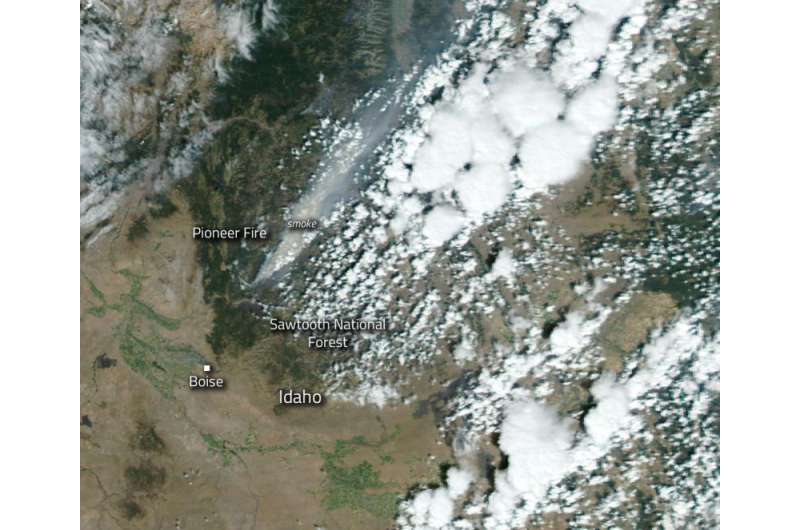U.S. West's largest fire still burning strong

The Pioneer Fire in Idaho continues to grow and grow quickly. The fire that began on July 18 under circumstances unknown is currently at 179,977 acres. Because of the continued fire growth due to dry, hot weather and an abundance of combustible timber, the Pioneer Fire Area Closure has increased. Pioneer Fire continues advancing to the north and northeast. It was less active than the last few days growing by 7,502 acres. The northern flank of the fire continues to burn in Little Sam Creek/Meadow Camp Creek and north of the Whitehawk Mountain area.
Old fire scars in the northeast near the Red Mountain area have slowed the progression of the fire. Firefighters in the Deadwood and Bear Valley area continue to look for opportunities to construct containment lines and limit additional growth. Crews in the Archie Mountain and Charlotte Gulch areas made good progress yesterday and continue to work on hot spots near the containment lines. The weather on Sept. 1 will mirror previous days but with a few changes in temperature which will cool slightly and in decreased winds. A cold front is expected to arrive over the fire area on Friday and bring a cooling trend through the holiday weekend. Hopefully the cooler weather and decreased winds will help to temper to spread of the flames.
Smoke from the fire will continue to impact the communities of Garden Valley, Lowman, Stanley and the surrounding areas. Air quality is being monitored, and the daily outlook for the region is published online at: idsmoke.blogspot.com. The smoke released by any type of fire (forest, brush, crop, structure, tires, waste or wood burning) is a mixture of particles and chemicals produced by incomplete burning of carbon-containing materials. All smoke contains carbon monoxide, carbon dioxide and particulate matter or soot and is hazardous to breathe. The elderly, small children, and those with respiratory issues should remain vigilant during times of increased smoke.
NASA's Aqua satellite collected this natural-color image with the Moderate Resolution Imaging Spectroradiometer, MODIS, instrument on Sept. 01, 2016 at 4:11 pm EDT. Actively burning areas, detected by MODIS's thermal bands, are outlined in red.
Provided by NASA





















